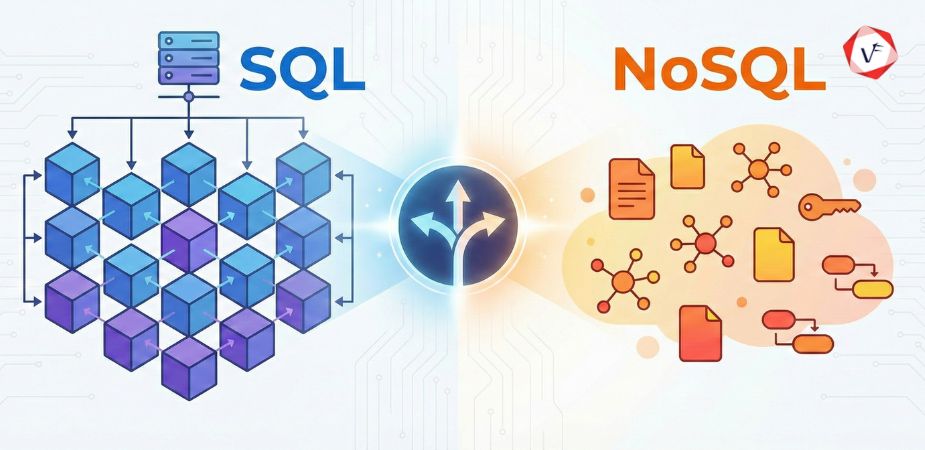- May 05, 2025 1:25 pm
- by Kevin
- May 05, 2025 1:25 pm
- by Deepthy

These days, protecting sensitive data has become more critical than ever. Data breaches not only compromise valuable information but also lead to significant financial losses and reputational damage. As businesses gear up for 2025, adopting robust data breach prevention strategies will be crucial to safeguarding critical assets. With the rising sophistication of cyber threats, organizations must prioritize proactive measures to protect their systems and maintain trust with their customers. Consequently, businesses must adopt data breach prevention strategies that cater to decentralized operations and diverse technological ecosystems.
Access Controls: Evaluate who has access to sensitive data and ensure that permissions are based on job roles.
Network Security: Check for unsecured endpoints, outdated software, and weak firewalls.
Third-Party Risk Assessments: Analyze the cybersecurity protocols of vendors and partners.
Security audits should be conducted quarterly or after significant changes in the IT infrastructure. This ensures continuous improvement and adaptation to emerging threats.
Key components of a Zero Trust Architecture include:
Multi-factor Authentication (MFA): Add an extra layer of security by requiring multiple forms of verification.
Micro-segmentation: Divide the network into smaller segments to limit access to sensitive areas.
Behavioral Analytics: Monitor user behavior to detect anomalies that could indicate a breach.
By implementing ZTA, businesses can significantly reduce the risk of unauthorized access and data theft
Identifying phishing emails and fraudulent websites.
Safely handling sensitive data, both online and offline.
Reporting suspicious activity to the IT team.
By empowering employees with knowledge, businesses can create a strong first line of defense against cyber threats.
Antivirus Software: Protect devices from malware and other malicious programs.
Endpoint Detection and Response (EDR): Provide real-time monitoring and automated responses to threats.
Device Encryption: Ensure that data stored on devices is unreadable without proper authorization.
As more employees work remotely, securing endpoints will be critical to protecting sensitive data from breaches.
Predict potential vulnerabilities by simulating cyberattacks.
Automate the identification and mitigation of security breaches.
Enhance threat intelligence by gathering and analyzing data from various sources.
By integrating AI and ML into their data breach prevention strategies, businesses can stay one step ahead of cybercriminals.
Transport Layer Security (TLS): Secure data transmitted over the internet.
Advanced Encryption Standard (AES): Protect data stored in databases and other repositories.
By using strong encryption protocols, businesses can prevent data breaches even if hackers manage to infiltrate their systems.
Detection: Quick identification of breaches using monitoring tools.
Containment: Isolating affected systems to prevent further spread.
Recovery: Restoring normal operations through backups and system patches.
Review: Analyzing the incident to identify root causes and improve defenses.
Regularly testing and updating the IRP ensures that businesses are well-prepared to handle cybersecurity incidents.
Conduct thorough due diligence on potential partners.
Require vendors to comply with strict cybersecurity standards.
Monitor third-party activities and access to sensitive data.
By addressing third-party risks, businesses can prevent breaches originating from external sources.
Steps to foster a cybersecurity culture include:
Leadership Involvement: Leaders should actively participate in cybersecurity initiatives to set an example.
Continuous Education: Offer regular workshops and e-learning sessions to keep employees updated on emerging threats.
Gamification: Use interactive tools and quizzes to make cybersecurity training engaging and memorable.
When cybersecurity becomes part of the organizational DNA, the likelihood of human errors leading to breaches significantly decreases.
Account Takeover Alerts: Detect when a user's account shows activity inconsistent with their typical behavior.
Unusual Data Transfers: Identify large or unauthorized data transfers that could indicate a breach.
Behavioral analytics enhances data breach prevention strategies by providing insights into potential vulnerabilities before they are exploited.
Key measures for cloud security include:
Identity and Access Management (IAM): Control who can access cloud resources and under what conditions.
Cloud Security Posture Management (CSPM): Continuously monitor and manage cloud security configurations.
Encryption of Cloud Data: Apply encryption to both data at rest and data in transit.
Partnering with trusted cloud service providers can also help ensure compliance with industry standards and best practices.
Key benefits of threat intelligence include:
Early Warning Systems: Receive alerts about potential threats in real time.
Tailored Defense Mechanisms: Develop countermeasures based on specific threats relevant to the organization.
Collaboration: Share threat data with industry peers to strengthen collective defenses.
Incorporating threat intelligence into cybersecurity frameworks enables businesses to anticipate and mitigate risks effectively.
Effective strategies include:
Privileged Access Management (PAM): Limit and monitor access to privileged accounts.
Session Monitoring: Record activities performed during privileged sessions to detect misuse.
Time-based Access: Grant access to sensitive systems only for the duration required to complete specific tasks.
By safeguarding privileged accounts, organizations can minimize the risk of internal and external threats.
Best practices for backups include:
Frequency: Perform daily incremental backups and weekly full backups.
Storage: Use offsite and offline storage to protect backups from cyber threats.
Testing: Regularly test backup systems to ensure quick and reliable data recovery.
Secure backups are a vital component of a comprehensive data breach prevention strategy.
Steps to secure applications include:
Code Reviews: Conduct regular manual and automated reviews to identify vulnerabilities.
Secure Development Practices: Adopt frameworks such as DevSecOps to integrate security into the software development lifecycle.
Web Application Firewalls (WAF): Protect web applications from SQL injection, cross-site scripting, and other common attacks.
A focus on application security minimizes risks associated with software vulnerabilities.
In 2025, safeguarding sensitive data demands a multi-faceted approach that combines advanced technologies, employee empowerment, and strategic planning. Businesses must adopt a proactive mindset, leveraging tools like behavioral analytics, threat intelligence platforms, and Zero Trust Architecture to stay ahead of cybercriminals. Regular training, compliance with regulations, and collaboration with cybersecurity experts further enhance defenses. For organizations seeking top-tier solutions, Vofox’s cybersecurity services help us stand out as a trusted partner. Our tailored approaches, modern technologies, and commitment to client success make us an excellent choice for addressing modern cybersecurity challenges. Reach out to us whenever you need to revamp your data security and safeguard your assets.
Guaranteed Response within One Business Day!

What is Digital Twin Technology?

What are WebAssembly (WASM) Applications?
Code Review Best Practices: Complete Guide for 2026

Database Selection Guide: SQL vs NoSQL
AI Agents in Enterprise Software: How Autonomous AI is Transforming Business Operations